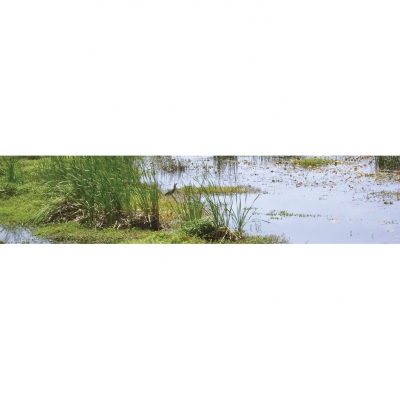Largest wetland in Auckland area - Te Henga
Proposed predator control is vital for Habitat Te Henga and for the reintroduction and survival of many birds including pateke. John Sumich , Chair, Habitat Te Henga puts the case.
Matuku, Forest & Bird’s sanctuary, is approximately 120ha of regenerating mixed kauri and podocarps that merges into West Auckland’s Te Henga wetland, the largest in the Auckland area.
Visiting a dozen years or so ago, Sean O’Connor and Ossie Latham declared to John Staniland, the resident guardian, that it was ideal for pateke although the whole valley would need predator control. Finally in 2012 the current Pateke Recovery group leader Tiff Browne and Nigel Miller agreed the blend of forest, swamp, and farmlands offered all that pateke desire. With the large dune-impounded Lake Wainamu just over the ridge it would also be part of the habitat any released pateke would utilise so that (area) also needed predator control. And while you’re at it they’ll (pateke) probably use the small estuary at the beach so include that!
Since 2002 the Ark in the Park project had been steadily expanding predator control to the current 2400ha and its north western boundary is conveniently the eastern boundary of the suggested predator controlled area.
The Ark has successfully introduced robins, whitehead and kokako and has an extensive mustelid and rat control program. Additionally a volunteer beach care group have been controlling predators for some years and have seen the return of New Zealand dotterel for their efforts. Other volunteers run a trap line at the north of the beach where on a headland there are five species of shearwater; the highest number cohabiting on a mainland site.
I was able to get grants from WWF, and Auckland Council Biosecurity to purchase traps both DOC200s for mustelids [the stainless steel model owing to the proximity of the wild West coast salt air] and also Belisle kill traps for feral cats.
Although the existing trap lines at the beach and at Matuku are fairly short and well managed by volunteers the new requirements have two long trap lines each over 12km and therefore too long for a sustained fortnightly trap checking by volunteers. Another grant gained from the Auckland Zoo Conservation fund is for a contract trapper who will alternate the long lines.
Fernbird sightings and perhaps territories are to be recorded, as they believe fernbird will be an indicator species showing a positive response to predator control. Over 100 traps were placed during September and between volunteers doing the shorter lines and a contract trapper doing the long lines we hope to maintain the effort year round. So far the perimeter traps enclose over 1000ha.
Robins from the Ark in the Park sanctuary have dispersed and have been seen around the lake; a kokako has also visited Matuku and tomtit are now being seen at Matuku so the original vision of the Ark in the Park, “ From the ridges to the sea” could become a reality with this new venture aimed at bringing back pateke. The potential then is for other waterfowl and rails to become established in the wetland and gradually disperse upriver toward the Ark.
Check it out at forestandbird.org.nz
Image Gallery
https://ducks.org.nz/flight-magazine/item/320-largest-wetland-in-auckland-area-te-henga#sigProId8c534cb296


